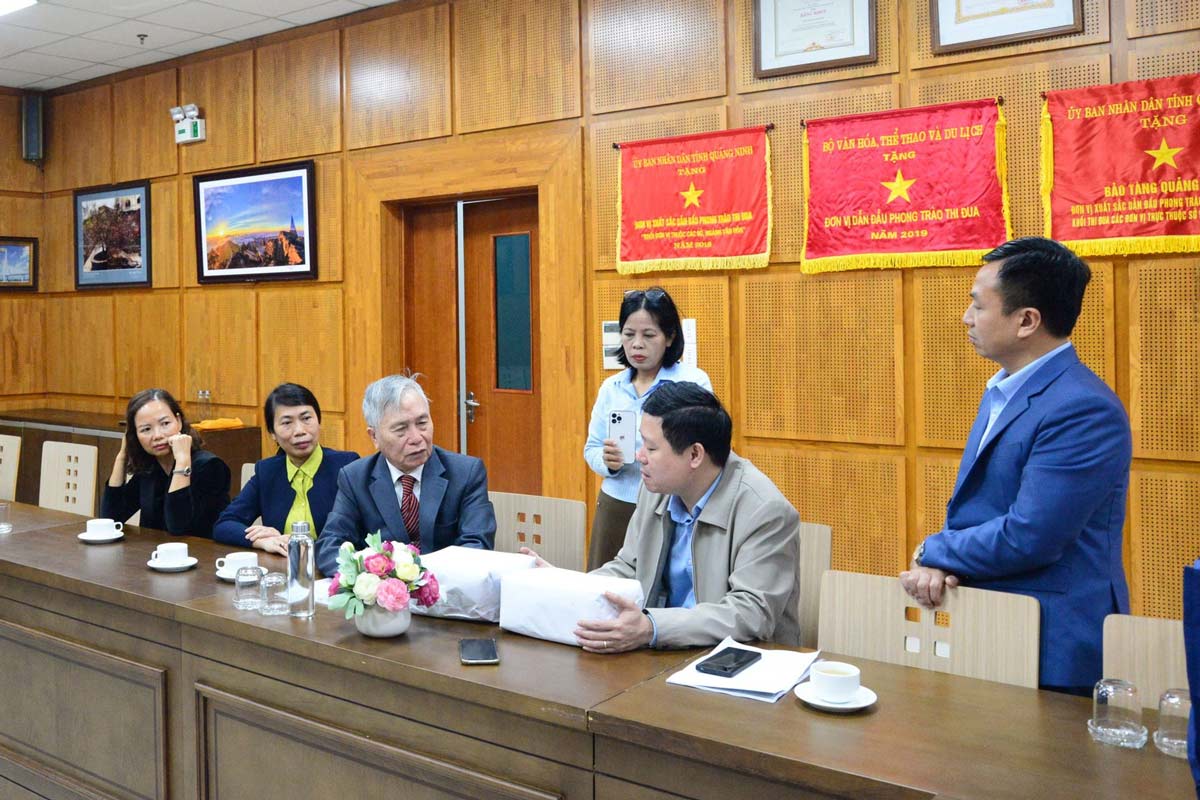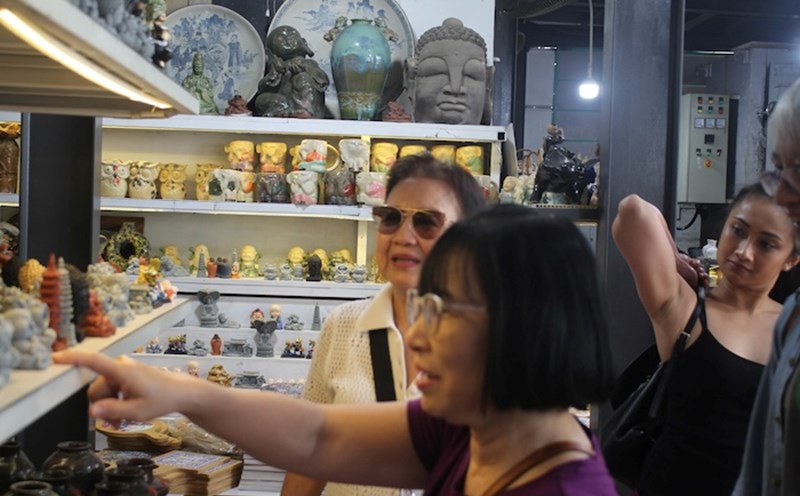These valuable artifacts were presented by the family of Mr. Vuong Huu Phu (Hong Gai ward, Ha Long city).
The two coalins are measured at 240x170x140mm, weighing 5.45kg and 260x160x110mm, respectively, weighing 5.65kg.
A piece of the surface has the name "SFCT" engraved on it, an abbreviation of the French Coal mining company (Societe Francaise des Charbonnages du Tonkin).
This is the largest coal mining company in Vietnam during the French colonial period, associated with the formation and development of the mining industry in Quang Ninh.
According to historical documents, on April 28, 1888, the French Coal Ministry of Bac Ky was established and was given the right by the French colonial government to exploit a large area of land stretching from Mong Duong, Cam Pha, Hon Gai to Vang Danh, Mao Khe.

This company manages 6 large coal mines, many small mines, 2 wharves, 2 mechanical factories and many infrastructure works serving coal mining.
The company's office was built at 95A, Le Thanh Tong Street, Hong Gai Ward, Ha Long City today. This is the first large-scale industrial facility in Vietnam and Indochina.
Currently, this building is used by the Vietnam National Coal - Mineral Industries Group (TKV) as a Coal Production Operation Center in Quang Ninh. In 2021, this project was ranked as a provincial-level relic.
According to Vuong Huu Phu, in 1958 he and his colleagues in the coal industry discovered, collected and stored these 2 coal fields. After more than 65 years of preservation, the family decided to donate it back to the Quang Ninh Museum with the desire to contribute to preserving and promoting the heritage of the coal industry.
Receiving these two artifacts not only helps supplement valuable documents but also demonstrates the community's cooperation in preserving the cultural and historical values associated with the mine area.
This is also an important source of documents for the next generation to better understand the mining industry, the formation and development process of Quang Ninh - the land with the oldest coal mining tradition in Vietnam.











